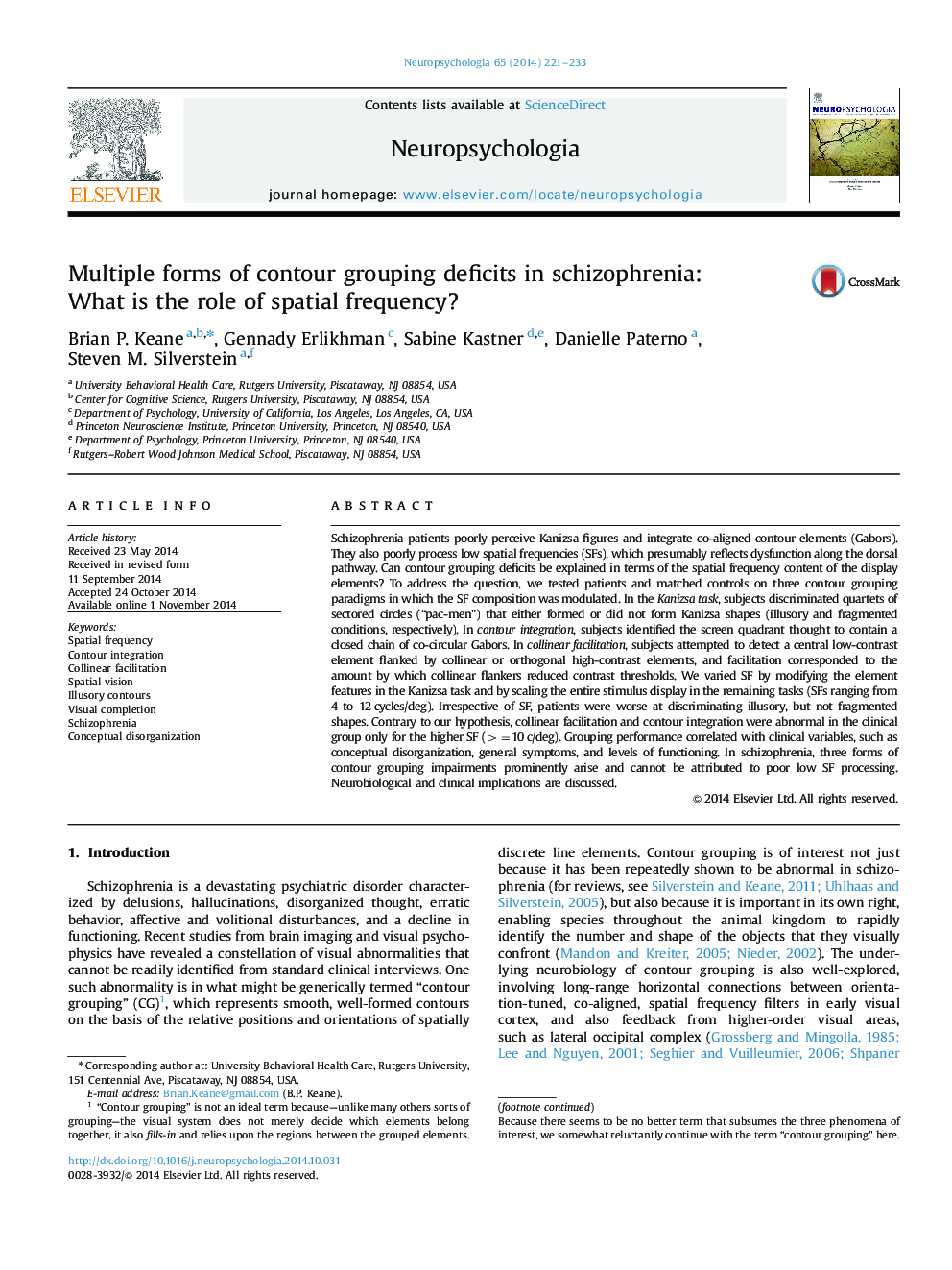| Article ID | Journal | Published Year | Pages | File Type |
|---|---|---|---|---|
| 7320797 | Neuropsychologia | 2014 | 13 Pages |
Abstract
Schizophrenia patients poorly perceive Kanizsa figures and integrate co-aligned contour elements (Gabors). They also poorly process low spatial frequencies (SFs), which presumably reflects dysfunction along the dorsal pathway. Can contour grouping deficits be explained in terms of the spatial frequency content of the display elements? To address the question, we tested patients and matched controls on three contour grouping paradigms in which the SF composition was modulated. In the Kanizsa task, subjects discriminated quartets of sectored circles (“pac-men”) that either formed or did not form Kanizsa shapes (illusory and fragmented conditions, respectively). In contour integration, subjects identified the screen quadrant thought to contain a closed chain of co-circular Gabors. In collinear facilitation, subjects attempted to detect a central low-contrast element flanked by collinear or orthogonal high-contrast elements, and facilitation corresponded to the amount by which collinear flankers reduced contrast thresholds. We varied SF by modifying the element features in the Kanizsa task and by scaling the entire stimulus display in the remaining tasks (SFs ranging from 4 to 12Â cycles/deg). Irrespective of SF, patients were worse at discriminating illusory, but not fragmented shapes. Contrary to our hypothesis, collinear facilitation and contour integration were abnormal in the clinical group only for the higher SF (>=10Â c/deg). Grouping performance correlated with clinical variables, such as conceptual disorganization, general symptoms, and levels of functioning. In schizophrenia, three forms of contour grouping impairments prominently arise and cannot be attributed to poor low SF processing. Neurobiological and clinical implications are discussed.
Keywords
Related Topics
Life Sciences
Neuroscience
Behavioral Neuroscience
Authors
Brian P. Keane, Gennady Erlikhman, Sabine Kastner, Danielle Paterno, Steven M. Silverstein,
